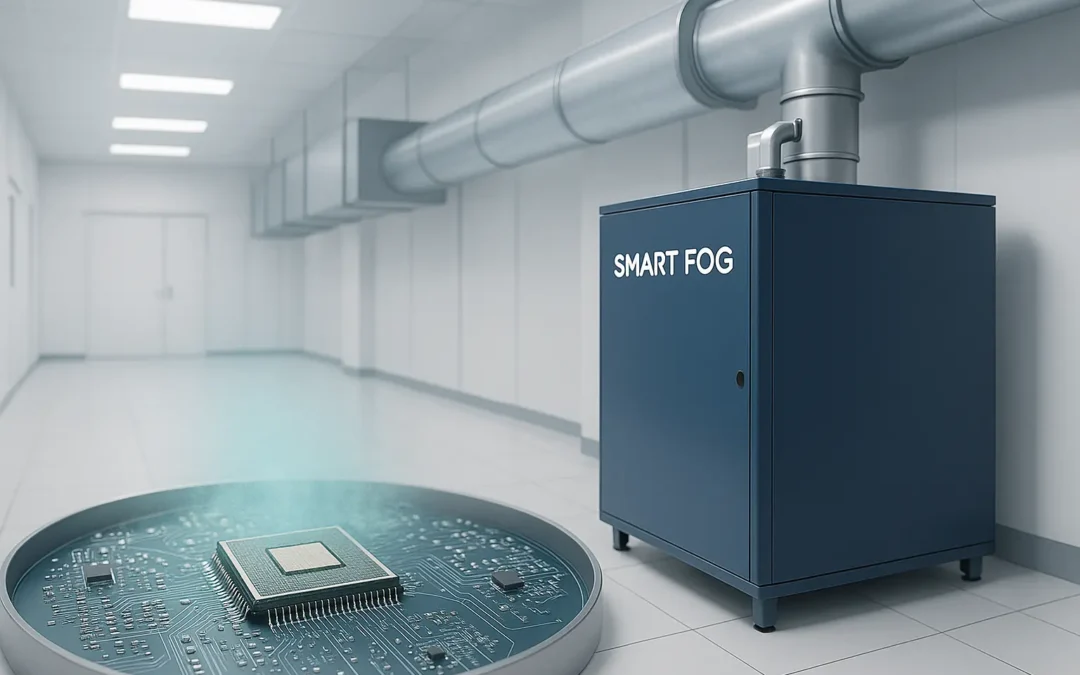Research Brief for Mitigating ESD Risks During Electronic Component Handling and Storage with Humidity
Executive Summary
The core opportunity is to create the definitive educational resource on using humidity for ESD control in electronics manufacturing. Current content is bifurcated: highly technical, standard-heavy whitepapers for experts and accessible, solution-focused blog posts from commercial vendors. There is a significant gap for a comprehensive, multi-layered guide that serves the entire learning journey—from a technician asking "why is humidity important?" to a process engineer asking "how do we integrate humidity control with our existing ESD program?" By synthesizing technical accuracy with clear, engaging teaching methodologies, we can become the go-to reference that educates, empowers, and is cited by the entire industry.
Educational Landscape Analysis
Current Leaders
The educational landscape is dominated by two types of content:
- Authoritative, Technical Sources (e.g., esdsystems.descoindustries.com, esda.org): These sites win on credibility. They publish whitepapers and standards-based information (citing MIL-HDBK-263), providing the technical depth required by engineers. Their content is seen as definitive and trustworthy. However, it is often dense, dry, and inaccessible to beginners or those outside a purely technical role.
- Accessible Commercial Guides (e.g., airtecsolutions.com, ikeuchi.eu): These sites win on clarity and problem-solving. They excel at explaining the core concepts in simple terms, using analogies and focusing on the business impact (e.g., production yield, quality). Their weakness is a tendency to oversimplify and present humidity control as a complete solution, often glossing over its limitations or the necessity of other ESD measures.
Learning Intent Patterns
Search queries reveal a clear learning progression from foundational knowledge to practical application and problem-solving.
-
Primary Questions: Users first seek to understand the fundamental relationship.
- What is ESD humidity control?
- How does humidity affect static electricity?
- Why is low humidity an ESD risk?
-
Progressive Questions: Once the basics are understood, learners want to take action.
- How to prevent ESD with humidity?
- What is the ideal humidity level for ESD control?
- What are the ESD temperature and humidity requirements?
-
Advanced Curiosities: Experienced users look for nuance, limitations, and specific problems.
- Is humidity control enough to prevent ESD?
- What are the risks of high humidity (corrosion)?
- ESD damage low humidity FAQ (seeking troubleshooting and specific details).
Content Authority Analysis
Top Educational Resources
-
http://esdsystems.descoindustries.com/whitepapers/wp_humidity.html
- Teaching Approach: Authoritative, data-driven whitepaper. Uses a technical tone and references military standards. Presents a crucial data table correlating RH levels with static voltage generation.
- Unique Value: Its core educational "aha" moment is the conclusion: humidity control is a backup, not a replacement for a comprehensive ESD program. This builds immense trust by providing a non-commercial, holistic perspective.
- Gaps: Low accessibility for non-engineers. The presentation is dense and lacks visual aids to simplify the concepts.
-
https://airtecsolutions.com/blog/airtec-blog/airtec-blog/static-electricity
- Teaching Approach: Explainer blog post. Uses simple definitions, clear headings, and focuses on the "what" and "why" before introducing the "how."
- Unique Value: Excellent at demystifying the core science for a broader audience. Effectively frames the problem in terms of business costs (yield, quality, reliability).
- Gaps: Lacks technical depth and the critical nuance provided by the Desco whitepaper. It presents humidity control as the solution, which could mislead learners.
-
https://www.esda.org/assets/Documents/e280ccf3ff/Humidity-FAQ-final.pdf
- Teaching Approach: FAQ format from the industry's standards body. This format directly answers specific user questions.
- Unique Value: Ultimate authority. As the ESD Association, its answers are considered definitive. Ranking with a PDF shows users seek out these high-authority, in-depth resources.
- Gaps: The PDF format is not engaging and lacks the narrative flow of a comprehensive guide. It serves as a reference but not an initial learning tool.
Knowledge Gap Matrix
- Concepts explained poorly everywhere: The critical trade-off between mitigating ESD with humidity and the risks of high humidity (corrosion, component delamination, solderability issues) is not well-explored in a single resource.
- Questions left unanswered:
- How do you implement humidity control differently for manual handling vs. automated transport vs. storage?
- How do you accurately measure and monitor humidity in a production environment? What tools are needed?
- What is the interplay between temperature and relative humidity in an ESD context?
- Connections not being made: No single piece of content connects the foundational "what is it" knowledge with the practical "how to implement" steps and the advanced "what are the limitations" wisdom. A learner must visit multiple sites to get the complete picture.
Strategic Educational Insights
Key Teaching Opportunities
- The "Aha" Moment Data Point: The data table from the Desco whitepaper showing static voltages skyrocketing from ~1.5kV to ~35kV when RH drops from 80% to 20% is the single most powerful teaching tool. This should be visualized in a compelling graph or interactive element.
- The "Goldilocks Zone" Analogy: Frame the ideal 40-60% RH as a "Goldilocks Zone." This simple analogy makes the concept sticky and easy to remember. Visually represent this with "Too Dry = ESD Risk" on one side and "Too Wet = Corrosion Risk" on the other.
- The "Safety Net" Metaphor: Adopt the Desco whitepaper's core insight. Position humidity control as an essential "safety net" that works in concert with primary ESD controls like grounding. This builds authority and trust by managing expectations.
Authority Building Hypothesis
We will achieve educational authority by creating a "pyramid" resource that serves all levels of learners. The base of the pyramid will be the simple, accessible explanations found in commercial blogs. The middle will contain the practical "how-to" guides. The peak will feature the nuanced, expert-level insights from technical whitepapers, addressing trade-offs and limitations. By becoming the only resource that contains all three levels, we will become the indispensable, most-cited source on the topic.
Content Architecture Recommendation
Format: [Comprehensive Educational Resource / Definitive Guide]
Proposed Educational Flow:
- The Hook: The Billion-Dollar Spark: Start with the high stakes—how an invisible static discharge can destroy sensitive, expensive components and cripple production lines. Frame the problem in terms of cost and reliability.
- Foundation: The Science of Static & Humidity, Simplified:
- What is ESD? (Triboelectric effect explained simply).
- How does humidity help? Explain how water molecules in the air create a conductive path, allowing static charges to safely dissipate before they build to dangerous levels.
- Building: The "Goldilocks Zone" for ESD Control:
- Introduce the 40-60% Relative Humidity range.
- Visualize the risks: A graph showing the exponential increase in static voltage below 40% RH and a callout box explaining the corrosion/moisture damage risks above 60% RH.
- Mastery: Humidity in Your Manufacturing Process:
- Address the user's specific context: manual handling, automated transport, temporary storage, and packaging.
- Crucially, position humidity as Part of a Complete ESD Program. Explain how it complements (but never replaces) grounding, wrist straps, ESD mats, and ionizers.
- Action: A Practical Guide to Implementation & Monitoring:
- Choosing the right humidification system.
- Tools for measurement (hygrometers) and monitoring best practices.
- Creating a monitoring and maintenance schedule.
Unique Educational Elements
- Interactive "Aha" Moment: An interactive slider where users can drag the RH percentage and see the corresponding static voltage potential change dramatically.
- Visual Explanations: Animated diagrams showing charge buildup on a surface in dry air versus charges dissipating via water molecules in humid air.
- Common Mistake Callouts: "Myth #1: Humidity Eliminates ESD," "Mistake #1: Setting and Forgetting Your Humidifier."
- Progress Checkpoints: A short, non-graded quiz after each major section to reinforce the key concepts.
Competitive Differentiation
We'll Win By:
- Unified Learning Journey: Creating the only resource a learner needs, from beginner to expert.
- Intellectual Honesty: Building trust by explicitly detailing the limitations and risks of humidity control, an angle commercial competitors avoid.
- Superior Pedagogy: Using interactive elements, superior visuals, and clear analogies to teach the topic more effectively than dense whitepapers or simplistic blog posts.
Link-Worthy Elements
- The interactive RH vs. Static Voltage slider will be a highly shareable and embeddable asset.
- A downloadable "ESD & Humidity Control Audit Checklist" for manufacturing floors.
- The "Goldilocks Zone" infographic, clearly explaining the risks of being too high or too low.
- A definitive section on "Humidity and ANSI/ESD S20.20 Compliance" that will be referenced by professionals.
Research Sources
- http://esdsystems.descoindustries.com/whitepapers/wp_humidity.html: Excellent source for technical data and the expert insight that humidity control is a secondary, not primary, measure.
- https://airtecsolutions.com/blog/airtec-blog/airtec-blog/static-electricity: Prime example of accessible, beginner-friendly explanation of the core scientific principles.
- https://www.esda.org/assets/Documents/e280ccf3ff/Humidity-FAQ-final.pdf: Confirms the authority of the ESD Association and the need for content that answers specific, practical questions in a FAQ format.
- SERP for "what is esd humidity control": Revealed the foundational questions beginners are asking.
- SERP for "how to prevent esd with humidity": Showed the transition to action-oriented, practical intent.
- SERP for "esd damage low humidity faq": Indicated a need for in-depth, problem-solving content for advanced users.





